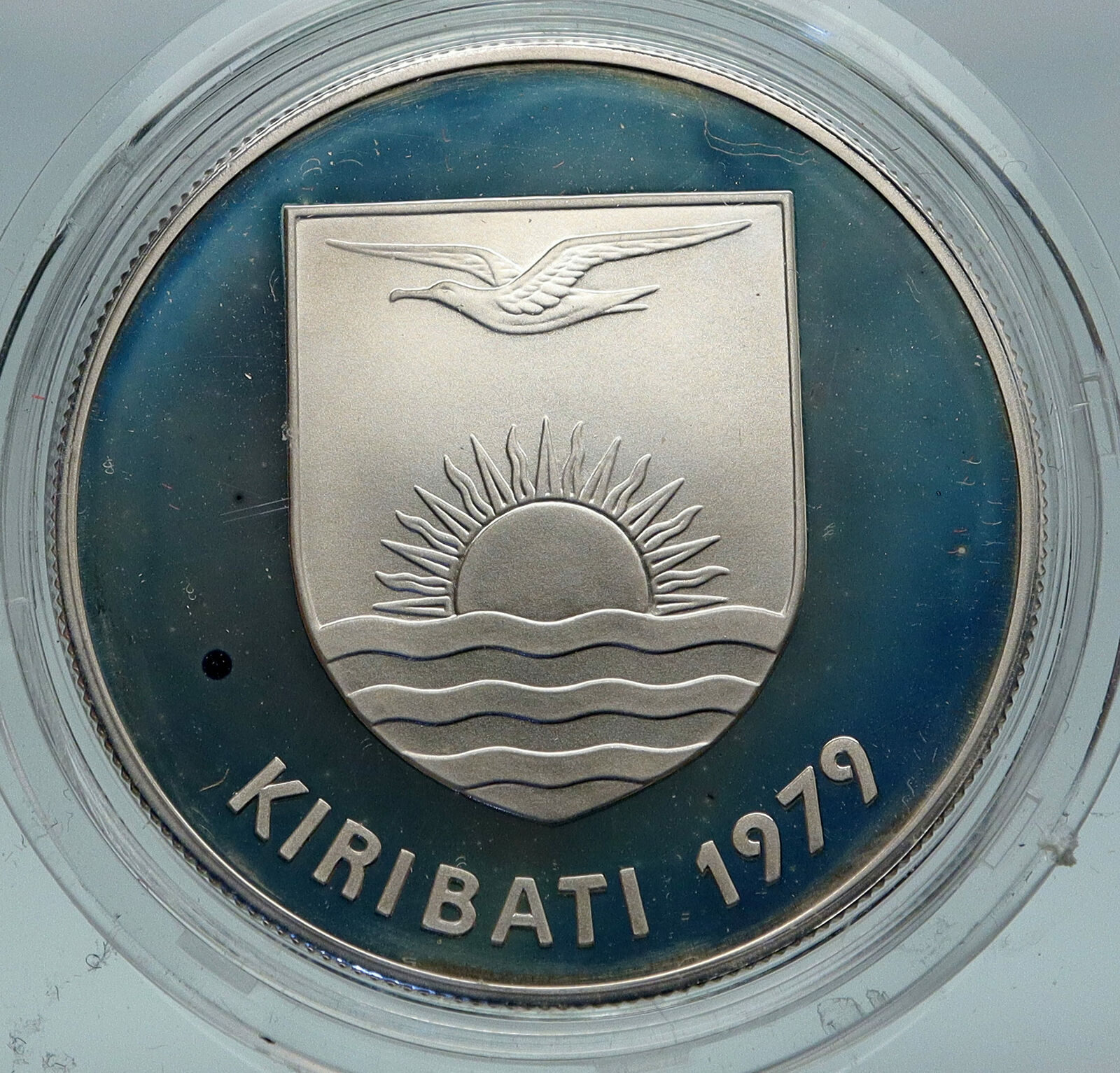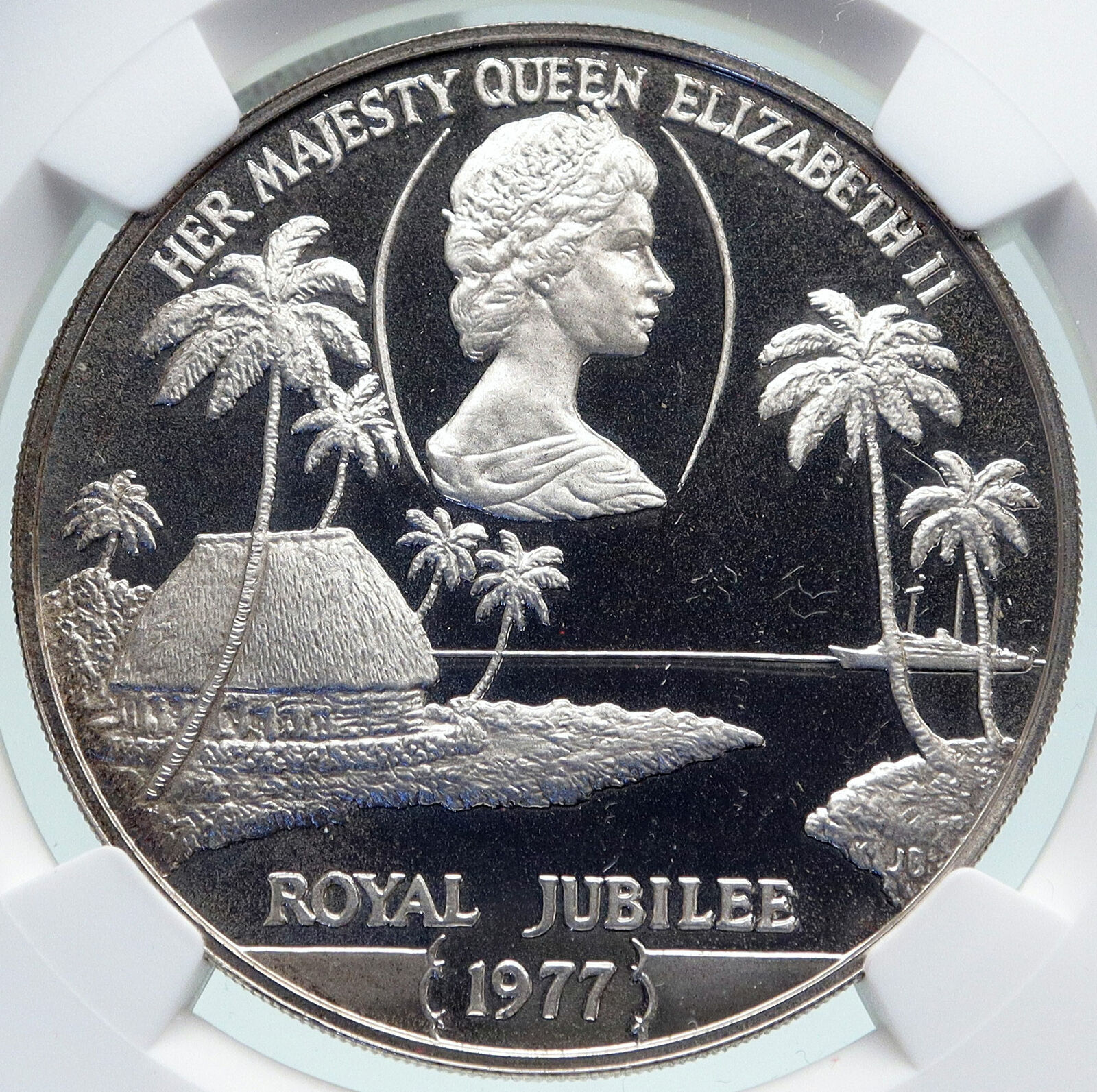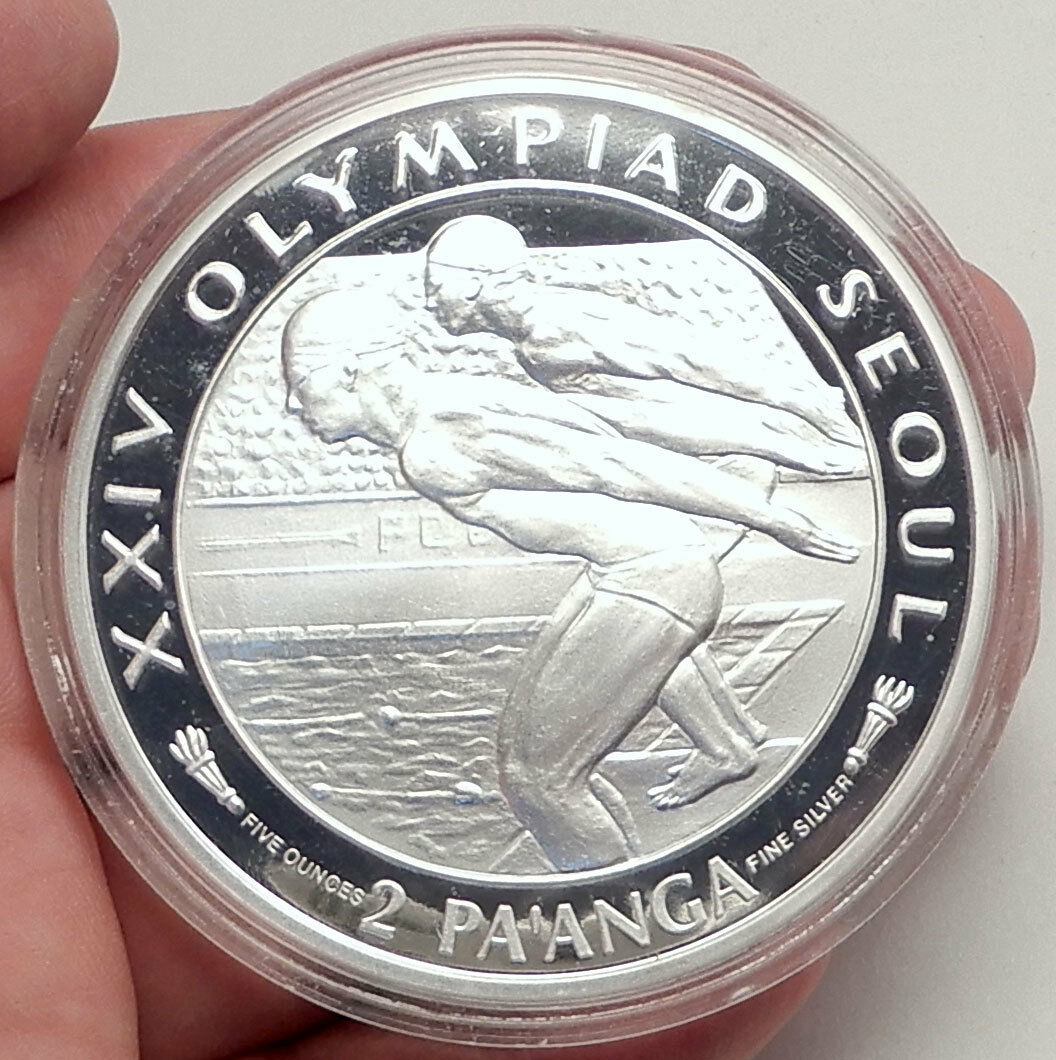|
Samoa
1980 Summer Olympics, Moscow
1980 Proof Silver 10 Tala 38.7mm (31.47 grams) 0.925 Silver (0.9359 oz. ASW)
Reference: KM# 36a
Certification: NGC PF 69 ULTRA CAMEO 2864239-002
SAMOA I SISIFO $ 10, National Coat-of-arms above value.
OLYMPIC GAMES 1980, Two runners jumping over hurdles.
You are bidding on the exact item pictured, provided with a Certificate of Authenticity and Lifetime Guarantee of Authenticity.

The 1980 Summer Olympics, officially known as the Games of the XXII Olympiad (Russian: И́гры XXII Олимпиа́ды, tr. Igry XXII Olimpiady), was an international multi-sport event held in Moscow, Soviet Union, in present-day Russia.
The 1980 Games were the first Olympic Games to be staged in Eastern Europe, and remain the only Summer Olympics held there, as well as the first Olympic Games to be held in a Slavic language-speaking country. They were also the first Olympic Games to be held in a socialist country, and the only Summer Games to be held in such a country until 2008 in Beijing, China. These were the final Olympic Games under the IOC Presidency of Michael Morris, 3rd Baron Killanin.
Eighty nations were represented at the Moscow Games – the smallest number since 1956. Led by the United States at the insistence of US President Jimmy Carter, 66 countries boycotted the games entirely because of the Soviet invasion of Afghanistan. Some athletes from some of the boycotting countries (they are not included in the list of 66 countries that boycotted the games entirely) participated in the games under the Olympic Flag. This prompted the Soviet-led boycott of the 1984 Summer Olympics.
 Samoa (/səˈmoʊə/), officially the Independent State of Samoa (Samoan: Malo Saʻoloto Tutoʻatasi o Sāmoa; Samoan: Sāmoa, IPA: [ˈsaːmoa]) and, until 4 July 1997, known as Western Samoa, is a country consisting of two main islands, Savai’i and Upolu, and four smaller islands. The capital city is Apia. The Lapita people discovered and settled the Samoan Islands around 3,500 years ago. They developed a unique Samoan language and Samoan cultural identity. Samoa (/səˈmoʊə/), officially the Independent State of Samoa (Samoan: Malo Saʻoloto Tutoʻatasi o Sāmoa; Samoan: Sāmoa, IPA: [ˈsaːmoa]) and, until 4 July 1997, known as Western Samoa, is a country consisting of two main islands, Savai’i and Upolu, and four smaller islands. The capital city is Apia. The Lapita people discovered and settled the Samoan Islands around 3,500 years ago. They developed a unique Samoan language and Samoan cultural identity.
Samoa is a unitary parliamentary democracy with eleven administrative divisions. The country is a member of the Commonwealth of Nations. Western Samoa was admitted to the United Nations on 15 December 1976. The entire island group, which includes American Samoa, was called “Navigator Islands” by European explorers before the 20th century because of the Samoans’ seafaring skills.
 .svg/250px-Samoa_on_the_globe_(Polynesia_centered).svg.png) After repeated efforts by the Samoan independence movement, the New Zealand Western Samoa Act 1961 of 24 November 1961 granted Samoa independence, effective on 1 January 1962, upon which the Trusteeship Agreement terminated. Samoa also signed a friendship treaty with New Zealand. Samoa, the first small-island country in the Pacific to become independent, joined the Commonwealth of Nations on 28 August 1970. While independence was achieved at the beginning of January, Samoa annually celebrates 1 June as its independence day. After repeated efforts by the Samoan independence movement, the New Zealand Western Samoa Act 1961 of 24 November 1961 granted Samoa independence, effective on 1 January 1962, upon which the Trusteeship Agreement terminated. Samoa also signed a friendship treaty with New Zealand. Samoa, the first small-island country in the Pacific to become independent, joined the Commonwealth of Nations on 28 August 1970. While independence was achieved at the beginning of January, Samoa annually celebrates 1 June as its independence day.
Travel writer Paul Theroux noted marked differences between the societies in Western Samoa and American Samoa in 1992.
In 2002, New Zealand’s prime minister Helen Clark formally apologised for New Zealand’s role in the events of 1918 and 1929.
Early Samoa
New Zealand scientists have dated remains in Samoa to about 2900 years ago. These were found at a Lapita site at Mulifanua and the findings were published in 1974.
The origins of the Samoans are closely studied in modern research about Polynesia in various scientific disciplines such as genetics, linguistics and anthropology. Scientific research is ongoing, although a number of different theories exist; including one proposing that the Samoans originated from Austronesian predecessors during the terminal eastward Lapita expansion period from Southeast Asia and Melanesia between 2,500 and 1,500 BCE.
Intimate sociocultural and genetic ties were maintained between Samoa, Fiji, and Tonga, and the archaeological record supports oral tradition and native genealogies that indicate inter-island voyaging and intermarriage between pre-colonial Samoans, Fijians, and Tongans. Notable figures in Samoan history included the Tui Manu’a line and Queen Salamasina (15th century). Nafanua was a famous woman warrior who was deified in ancient Samoan religion.
Contact with Europeans began in the early 18th century. Jacob Roggeveen, a Dutchman, was the first known European to sight the Samoan islands in 1722. This visit was followed by French explorer Louis-Antoine de Bougainville, who named them the Navigator Islands in 1768. Contact was limited before the 1830s, which is when English missionaries and traders began arriving.
|










 Samoa (/səˈmoʊə/), officially the Independent State of Samoa (Samoan: Malo Saʻoloto Tutoʻatasi o Sāmoa; Samoan: Sāmoa, IPA: [ˈsaːmoa]) and, until 4 July 1997, known as Western Samoa, is a country consisting of two main islands, Savai’i and Upolu, and four smaller islands. The capital city is Apia. The Lapita people discovered and settled the Samoan Islands around 3,500 years ago. They developed a unique Samoan language and Samoan cultural identity.
Samoa (/səˈmoʊə/), officially the Independent State of Samoa (Samoan: Malo Saʻoloto Tutoʻatasi o Sāmoa; Samoan: Sāmoa, IPA: [ˈsaːmoa]) and, until 4 July 1997, known as Western Samoa, is a country consisting of two main islands, Savai’i and Upolu, and four smaller islands. The capital city is Apia. The Lapita people discovered and settled the Samoan Islands around 3,500 years ago. They developed a unique Samoan language and Samoan cultural identity. 
.svg/250px-Samoa_on_the_globe_(Polynesia_centered).svg.png) After repeated efforts by the Samoan independence movement, the New Zealand Western Samoa Act 1961 of 24 November 1961 granted Samoa independence, effective on 1 January 1962, upon which the Trusteeship Agreement terminated. Samoa also signed a friendship treaty with New Zealand. Samoa, the first small-island country in the Pacific to become independent, joined the Commonwealth of Nations on 28 August 1970. While independence was achieved at the beginning of January, Samoa annually celebrates 1 June as its independence day.
After repeated efforts by the Samoan independence movement, the New Zealand Western Samoa Act 1961 of 24 November 1961 granted Samoa independence, effective on 1 January 1962, upon which the Trusteeship Agreement terminated. Samoa also signed a friendship treaty with New Zealand. Samoa, the first small-island country in the Pacific to become independent, joined the Commonwealth of Nations on 28 August 1970. While independence was achieved at the beginning of January, Samoa annually celebrates 1 June as its independence day.




